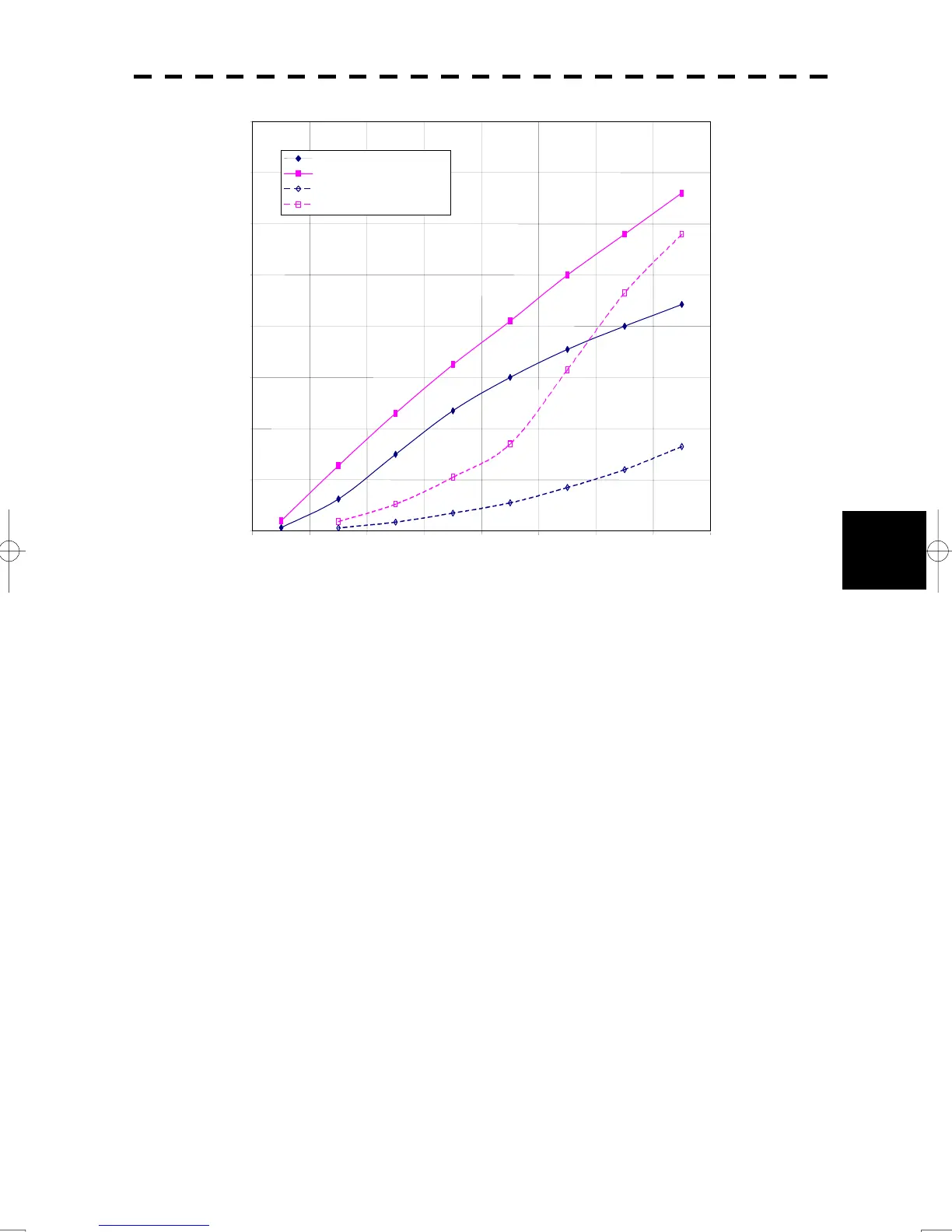6-8
6.3 Sea Clutter And Rain And Snow Clutter
y
yy
yyy
6
Figure 6.5 Decreased target detection distance by X band radar due to precipitation
[III] Coping with sea clutter and rain and snow clutter
When the weather is bad and the ocean is rough, the use of an S band radar is effective because the radar is
not influenced by sea clutter so much and attenuation due to rain drops is small. When an X band radar is
used, reducing the pulse width will reduce the influence by spurious waves, and also the spurious wave
rejection function effectively works; therefore, the use of short pulse is effective when the weather is bad.
By using image processing functions PROCl 1 to 3, it is expected that spurious waves are further
suppressed. Since optimal settings for those items can be automatically made by using the function mode,
it is recommended that STORM or RAIN be used by selecting the function mode when the weather is bad.
For details of the function mode, see Chapter “3.9 USE FUNCTION KEY”.
However, it should be stated that functions may make some targets invisible, particularly targets with
higher speeds.
0 2 4 6 8 10 12 14 16
Detection distance while it is not raining (NM)
Precipitation of 16 mm/hr Pulse width 0.05 μs
Precipitation of 4 mm/hr Pulse width 0.05 μs
Precipitation of 16 mm/hr Pulse width 0.8 μs
Precipitation of 4 mm/hr Pulse width 0.8 μs
Detection distance while it is raining (NM)
0
2
4
6
8
10
12
14
16
